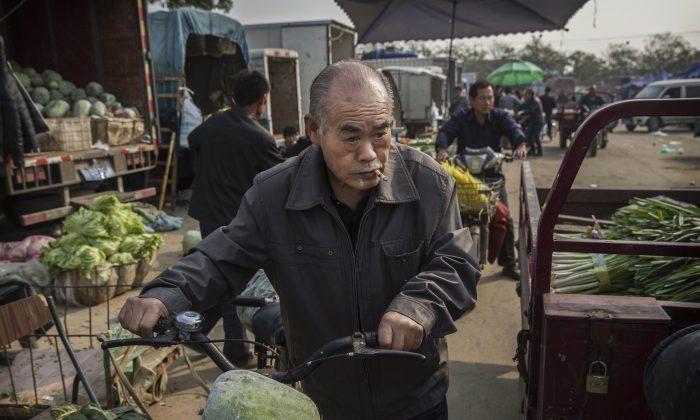News Analysis
China’s
massively unfunded public pension plan that was set to run out of cash in 2035 will be more insolvent, with financially struggling firms allowed to cut contributions.
China’s national pension fund was already set to hit
peak assets of about $985 billion in 2027; gradually run out of cash by 2035, and then convert to a pay-as-you-go system.
China has about
30 million small and medium-sized businesses that account for more than 60 percent of GDP, and employed about 80 percent of urban workers in 2019, according to government statistics. A survey of 1,000 of these small and medium-sized companies by Tsinghua University and Peking University in mid-February found that over one-third can only survive for another month with their cash on hand.
The director of the international department of the People’s Bank of China, Zhu Jun,
warned about the economic risks amid the COVID-19 pandemic: “The possibility of a ‘Great Depression’ cannot be ruled out if the epidemic continues to run out of control, and the deterioration of the real economy is compounded by an eruption of financial risks.”
To help support the economy, Beijing announced in February that companies can stop or reduce contributions to pension funds.
The state pension will be responsible for funding the retirement incomes for 50 percent of all urban workers by 2055. If companies are allowed to cut or stop pension contributions now, then this could accelerate the system’s coming demise.
China’s public pension system for urban employees, called the “Basic Old Age Insurance,” was launched in 1997. The system requires workers to contribute 8 percent of their wages, while employers pay up to 20 percent of their workers’ wages into the state pension fund. With almost
400 million participants, the system offers retirement for women at age 55 and men at age 60, with a pension benefit income averages of about 63 percent of the final wage.
But University of South Carolina marketing professor Frank Xie
told the Voice of America that this very generous plan design is only one of the reasons that China’s urban pension system has become increasingly insolvent.
Average retirees receive monthly benefit payments of 2,000 to 3,000 yuan, or $284 to $426. But Chinese government employee payments range from 6,000 to 10,000 yuan, or $852 to $1,420. According to Xie: “The Communist Party is buying off many middle- to highly-ranked government officials and civil servants, who now live a comfortable life.”
Professor Xie
contends that public resentment is rising on the Internet over the discrepancy between the average urban worker’s retirement income, compared to the retired government employee’s income replacement. But an even bigger concern should be the approximately 287 million farmers and migrant workers that get no benefit.
The Chinese Academy of Social Sciences (CASS)
offers another reason for China’s urban pension insolvency. It said the plan’s collection rate as a percentage of wages only averaged 15.59 percent in 2015, far below the legally mandated 28 percent contribution rate.
China already has the world’s largest retirement population—aged 60 and above—at over
241 million. Due to its one-child policy from 1979 to 2015, China’s birth rate remains low.
Currently, it takes two workers to support each retiree relying on the pension fund, but that will drop to one worker for each retiree by 2050, according to CASS.
Not counting the hidden pension funding obligations, China’s authoritarian development model was already in
trouble by the end of 2019 with total household, financial sector, business and government debt of $43 trillion. Debt has more than quadrupled from $10 trillion in 2009, and now is approaching 310 percent of gross domestic product (GDP),
according to the Institute of International Finance.
The Chinese regime’s official unemployment rate is at a record of
6.2 percent. But Chief economist Liu Chenjie at Upright Assets argues that China’s official data only tracks the 442 million urban workforce, and ignores the
290 million migrant workforce that provides most urban low-wage factory and service industry labor.
Chenjie
estimates that 180 million Chinese service sector jobs disappeared during the COVID-19 pandemic. Despite the government’s claims that its factories and ports have reopened, Chenjie suggests that about 205 million migrant workers that want to work still cannot or are unable to go back to work.






Friends Read Free